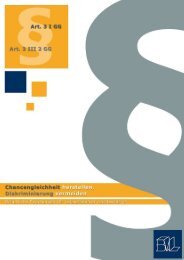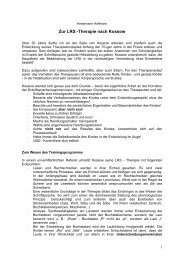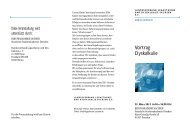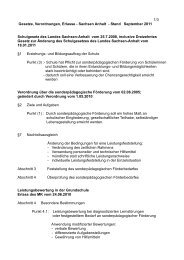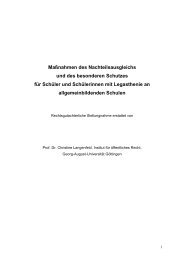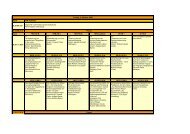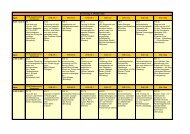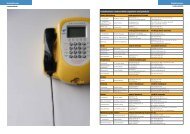Abstractband zum 16. Kongress des Bundesverbandes Legasthenie
Abstractband zum 16. Kongress des Bundesverbandes Legasthenie
Abstractband zum 16. Kongress des Bundesverbandes Legasthenie
Sie wollen auch ein ePaper? Erhöhen Sie die Reichweite Ihrer Titel.
YUMPU macht aus Druck-PDFs automatisch weboptimierte ePaper, die Google liebt.
<strong>Abstractband</strong> <strong>16.</strong> <strong>Kongress</strong> <strong>des</strong> Bun<strong>des</strong>verban<strong>des</strong> <strong>Legasthenie</strong><br />
Understanding Dyslexia through Computational Modeling<br />
Johannes Ziegler<br />
Université de Provence and CNRS, Marseille, France<br />
The strength of computational modeling lies in the fact that all processes and representations<br />
that are relevant for reading have to be implemented in a computer program, which<br />
allows the modeler to make precise simulations of reading performance. These models<br />
can be used to explore dyslexia by “lesioning” or “impairing” the processes that are<br />
thought to underlie dyslexia. This is precisely what we did in the context of the dual route<br />
cascaded model of reading (DRC, Coltheart, Rastle, Perry, Langdon & Ziegler, 2001).<br />
In the first step, we <strong>des</strong>igned tasks that would allow us to estimate the deficits for each<br />
dyslexic in the different levels of the model: attention, letter processing, access to the<br />
orthographic and phonological lexicons and phoneme processing. In a second step, we<br />
simulated reading deficits for each child by impairing those levels that were found to be<br />
deficient in the reading component tasks. The model not only accounted fairly well for<br />
individual reading patterns but also captured the different dyslexia profiles discussed<br />
in the literature (i.e., surface, phonological, mixed, and mild dyslexia). Thus, taking into<br />
account the multiplicity of underlying deficits on an individual basis provi<strong>des</strong> a parsimonious<br />
and accurate <strong>des</strong>cription of developmental dyslexia. This underscores the necessity<br />
of investigating dyslexia at the level of individuals rather than as a unitary disorder.<br />
References<br />
Coltheart, M., Rastle, K., Perry, C., Langdon, R., & Ziegler, J. C. (2001). DRC: A dual route<br />
cascaded model of visual word recognition and reading aloud. Psychological Review,<br />
108, 204-256.<br />
Ziegler, J. C., Castel, C., Pech-Georgel, C., George, F., Alario, F. X., & Perry, C. (2008).<br />
Developmental Dyslexia And The Dual Route Model Of Reading: Simulating Individual<br />
Differences and Subtypes. Cognition, 107, 151–178.<br />
Korrespondenzautor:<br />
Johannes Ziegler<br />
johannes.ziegler@univ-provence.fr<br />
136



